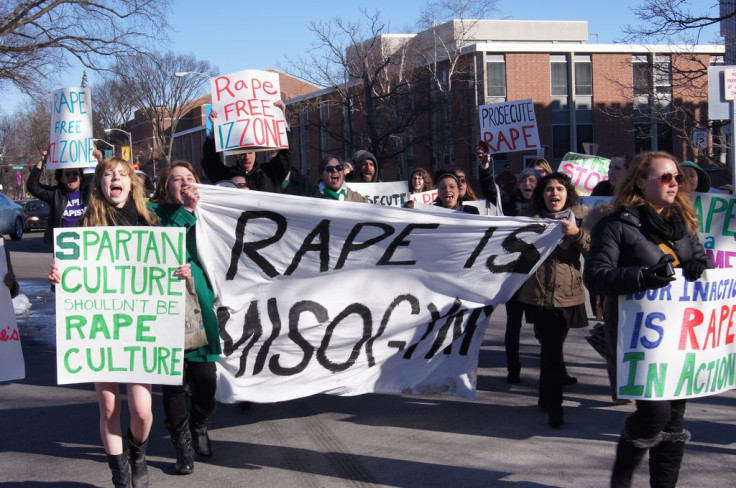Sexual Violence On Campus: One-Third Of Women Experience Rape Before Sophomore Year

Too many young women are experiencing rape or attempted rape during their first year of college, finds a new study published in the Journal of Adolescent Health. The study is reportedly the first to look at the risk of sexual violence for first-year students.
Researchers from Brown University surveyed 483 first-year women attending a university in upstate New York about their experience with rape — attempted or by incapacitation or force. Participants were each surveyed when they arrived on campus, at the end of each semester, and again the following summer. For the purpose of the study, rape was defined as “vaginal, oral, or anal penetration using threats of violence or use of physical force, or using the tactic of victim incapacitation” so as to detach from other forms of sexual violence.
The results showed nine percent of first-year women experienced attempted or forced rape, while 15.4 percent of women reported an attempted or completed rape while incapacitated; some women reported more than one experience, which prior studies have shown is quite common. And for women who had experienced incapacitated rape (18 percent) and forcible rape (15 percent) prior to college were facing a 26 and 22 percent risk of rape by sophomore year, respectively.
"In our sample, by the time they were college sophomores, 37 percent of these women had experienced one or the other kind of rape — that's over a third of female students," Kate Carey, lead author and professor of behavioral and social sciences at Brown, said in a press release. "That is remarkable. If I have a class with 25 upperclass women, eight of them may have experienced an event like this and all that can come with it.”
Carey is referring to the mental health repercussions rape victims often face, from depression to substance abuse. This study’s findings suggest college campuses need to work on better intervention for students who face increased risk of rape. As it stands, the Centers for Disease Control and Prevention cites several risk factors, from experimenting with alcohol and drug use, to childhood history of abuse and lack of institutional support from police.
While the prevalence of campus rape has garnered national attention recently, Carey said it’s still dealt with “inadequately.” To her, a young woman’s risk of rape has reached “epidemic levels.”
"If you swap in any other physically harmful and psychologically harmful event, a prevalence of 15 percent would be just unacceptably high," she added. "If, for instance, 15 percent of our young people were breaking their legs in their first year of school, we would expect that the community would do something to enhance the safety of the environment."
Source: Carey K. Journal of Adolescent Health. 2015.
Published by Medicaldaily.com



























